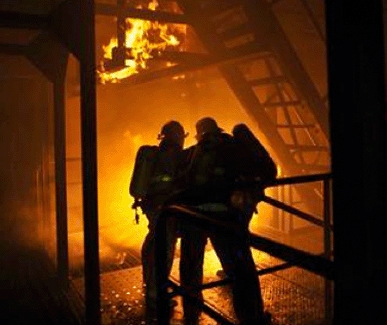
The defence company is using its heritage in AR to close a gap that exists between bulky and unadaptable systems used by the military and commercially available equivalents that tend to be large and fragile.
To this end, BAE Systems has used DSEI 2017 to unveil a wearable, AR concept that uses its patented waveguide technology to provide optical performance and efficiency in a miniaturised, ruggedised package.
Scheduled for qualification and validation in 2019, the product will be worn like a pair of glasses and use free-space tracking technology to display guidance, targeting, and mission information to the user, along with sensor video.
Prior to that, BAE is engaging with customers to gain feedback that will inform the design and capabilities of the final product.
Addressing the media at DSEI, Rob Merryweather, director of Strategic Growth at BAE Systems’ Electronic Systems, said the technology brings together three key technology threads: display, a tracking solution that understands where a person is located, and imaging technologies that enhance the performance of the human eye.
“We’ve reached a place where we understand those building blocks well enough to believe we can deliver a product, and to test that we can deliver a product that we believe will solve those needs,” he said. “Equally, we want to go through that journey with key customers who are going to use this, be that emergency responders…soldiers in the dismounted domain or in military vehicles, be that through commanding ships or commercial pilots.
“All of those users have particular features they need, and particular concerns that need to be addressed. These things will ultimately be successful if they enhance the users’ ability to do their role.”
In the firefighting scenario, Merryweather envisages a visual display that that shows a virtual trail of breadcrumbs behind firefighters as they go into a building.
“That means they can get out of that building more quickly, they can retrace their steps with confidence,” he said. “That in turn means potentially firefighters can go further into a building than they’d previously have done so without that technology. At the point where we do that, we’ve got to make sure that display continues to work so they can find their way out again.”
Merryweather added that the final product will give users an experience similar to watching a 52” TV from 5’ away, so information can be overlaid around the periphery without hindering the view.
One hurdle that must be overcome involves the powering the augmented reality glasses.
“We know that we’re capped at 2W per side. At more than 2W per side the temperature close to the head becomes too much of a problem,” said Merryweather. “We’re a little bit dependant on how much efficiency we get out of the waveguide when we do that development, but ideally we would like to be much closer to 0.5W to a 1W per side. Again, as we go through this we’ll understand where that needs to be. Those power requirements are to be fully daylight readable, so if you’re in a low light environment you could bring that power massively down. But we know what the cap is, what you’re then into is how low we get it so the battery life goes up and the size of the batteries you need to carry… go down."
Potential end users of BAE's augmented reality solution:
Civil aviation – pilots of passenger and transport aircraft, providing their primary flight information in the glasses, which they would normally have to look down to see.
First responders – police being able to use facial recognition technology to identify and secure wanted suspects. Firefighters being able to retrace their steps through a burning building using ‘virtual footprints’. Search and rescue personnel viewing thermal imagery feeds while searching for a lost hiker or survivors of a shipwreck, without having to look down at a traditional screen.
Athletes (for training purposes) – cyclists being able to see racing line information, speed, distance from racer in front of them.
Ship bridge operators – Providing situational awareness and navigation information, identifying hazardous areas, or water depth.





April 1886: the Brunkebergs tunnel
First ever example of a ground source heat pump?